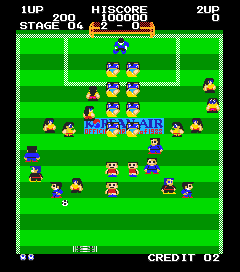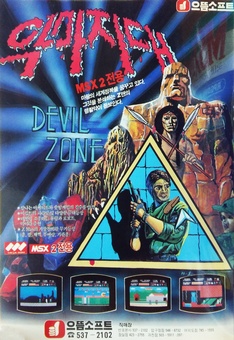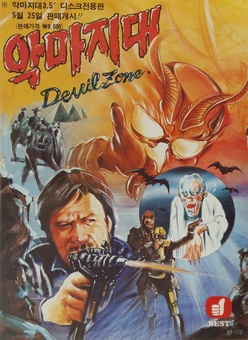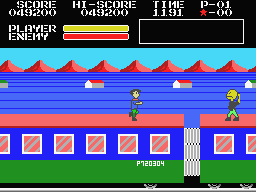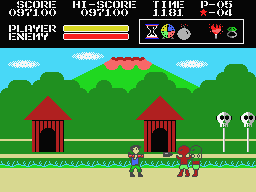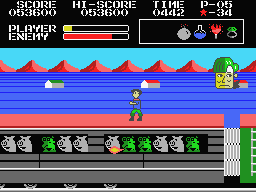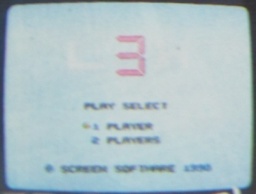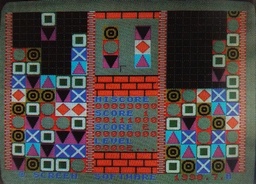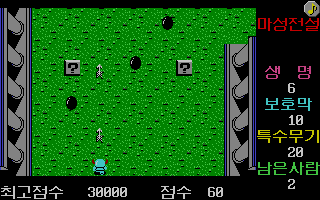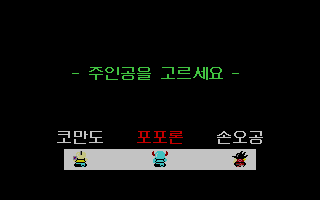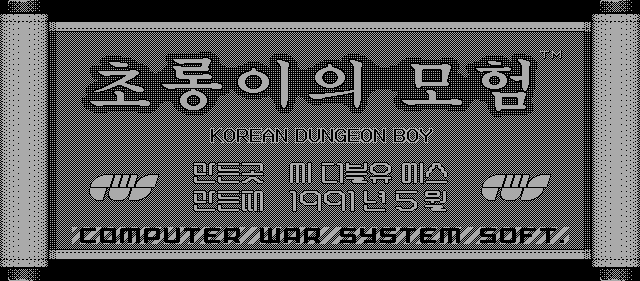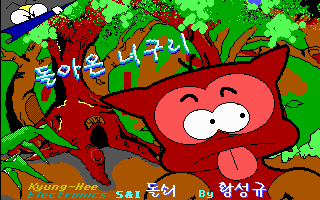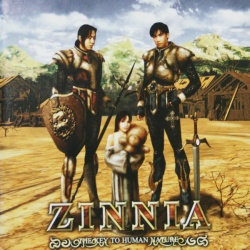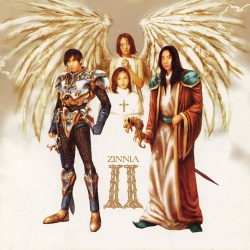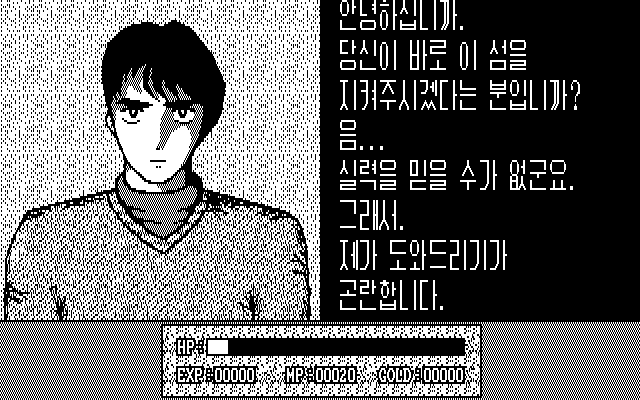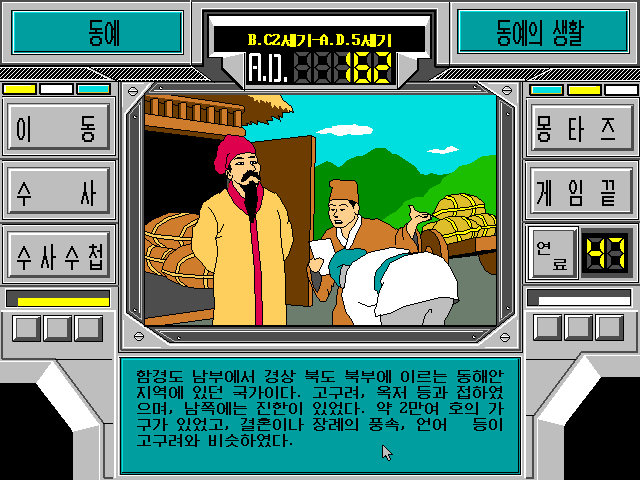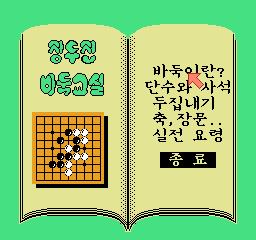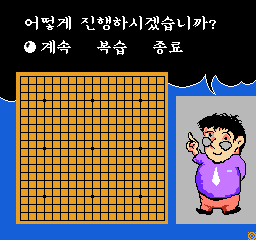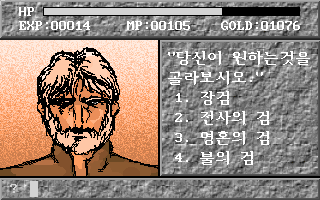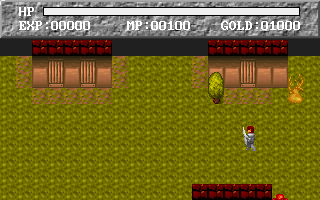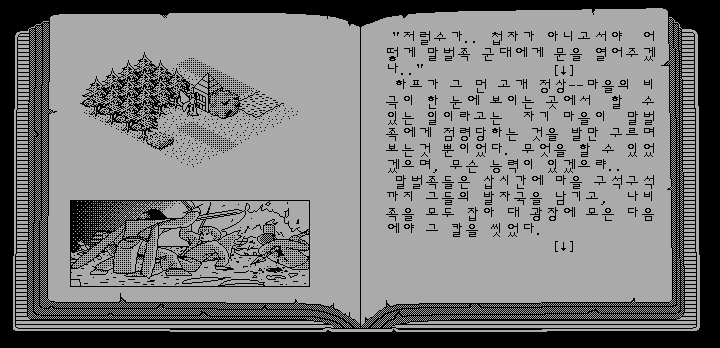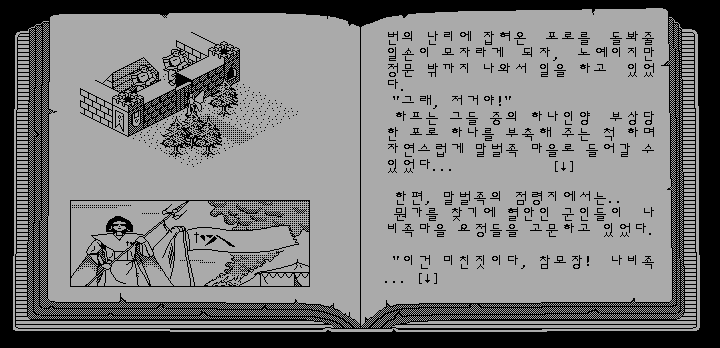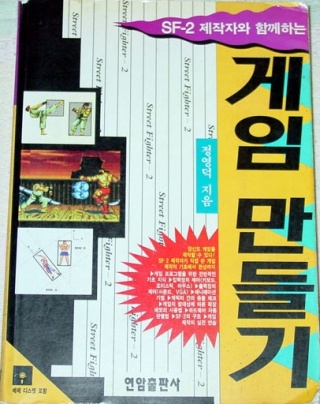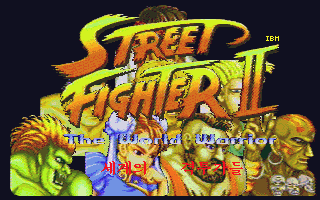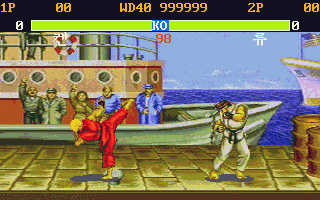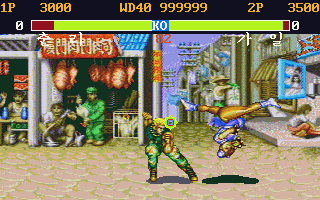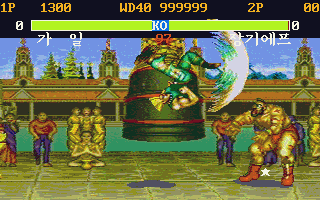A History of Korean Gaming
|
<<< Prior Page |
|
Other Games: |
||||
|
|
||||
|
|
|
|
Other Games 1988-1993
Super Free Kick / HEC's Spin Kick - Arcade (1988)
Super Free Kick (Arcade)
The sojourn of the Haesung Electronics Company into the gaming world might have been brief, but they were one of the very early Korean arcade game developers, together with SunA and Dooyong.
Their only known game, Super Free Kick is a rip-off of Nihon System's Free Kick (1987), which may be just another Breakout clone, but other than in most specimen of the genre, the aim is to score goals in a soccer setup until the own score is higher than the opponent "team". Most of the soccer players just act like movable breakout stones and disappear after being hit, but some form the actual defense of the team and kick the ball back in almost impossible angles.
The technology behind the arcade PCB is rather weird, as it is based on a heavily modified MSX2 board1. Super Free Kick is also an early example of product placement in video games, as each stage shows advertising of some korean company on the playing field.
악마지대 (Angma Jidae) / Devil Zone - MSX (May 25, 1989)
Devil Zone has in its time usually been compared to Castlevania, but that was based entirely on superficial criteria like the name (Angma is the Korean pronounciation for Akuma) and a whip as an optional weapon. In fact, the game is much more akin to single plane beat 'em ups like the NES Kung Fu. The player just walks from left to right and kicks ghosts, soldiers, savages and mummies to death. Some enemies drop special items that grant invincibility, time stop, health recharge and other things. Others leave red stars, which can be traded in for weapons. The cheapest one is a sword that just slightly enhances range, followed by a whip, a boomerang, a gun and a bazooka.
The game is balanced pretty badly, though, and while the shooting weapons make the game ridiculously easy, the latter two of the five stages are completely impossible without one of them and a sufficient amount of stars for backup, as the guns do run out of ammo. At the end of every stage awaits a boss, their behaviour is pretty much the same each time, with only the sprite and the flight behaviour of their projectiles changed.
Almost more interesting than the game itself is its awesome advertisement, not only ripping off Konami's cover for Metal Gear (which was in turn ripping off the movie Terminator), but also a ton of other movie images, album covers and whatnot.
L3W - MSX (July 1990)
Super Columns - Master System (1990)
L3W (MSX)
The puzzle game L3W was put out by Screen Software, another computer / pirate game store from the 80s. The game itself is a variant on columns. A Master System version called Super Columns has been made for HiCom, then distributor of the console, which also includes a Tetris play mode.
마성전설 (Maseong Jeonseol) / Extended Knightmare - IBM PC (August 1990)
A PC port to Konami's MSX game Knightmare with Korean screen text, programmed by Kim Sungsik, who later worked as a Programmer for Soft Action on Fox Ranger and also formed his own development team, Danbi System. The gameplay was accompanied by the rhythms of Lambada. In the beginning, the player can choose between three playable characters: The standard hero from the MSX game, a commando and Son Wukong. The freeware title was possibly the first Korean PC game to support EGA graphics.
Quick Info:
|
Developer: |
Kim Sungsik |
|
Genre: |
Action: Top-Down |
초롱이의 모험 (Chorongi-ui Moheom) / Korean Dungeon Boy - IBM PC (May 1991)
Korean Dungeon Boy (IBM PC)
Before Choe Wanseop was contracted by Hyundai for the never released Hwarang Sogong, he made himself a name with this popular freeware dungeon crawler in Hercules graphics. The principle is simple. The hero has to find the exit of each dungeon floor before a timer runs out, but also needs to take care not running out of ammunition or batteries, which fuel his primary weapon, armor and radar. Powerups for those lie around on the dungeon floor, but the hunt for those items is disturbed by a number of hostile creatures. Enemies are aimed at with a keyboard-controlled cursor. Still, the game doesn't feel quite like a shooter, maybe more akin to a realtime action RPG.
돌아온 너구리 (Doraon Neoguri) - IBM PC (1992)
Doraon Neoguri (IBM PC)
The arcade game Ponpoko apparently was extraordinarily populary in Korea, or at least with Korean programmers. There are at least four known Korean ports of the game. The game is remarkable as one of the very few Korean EGA based games (the only other known one is the Knightmare PC port Majeong Jeonseol, which might not exist anymore).
지니아 (Zinnia) - IBM PC (1992)
An early freeware action RPG very much inspired by Ys, Zinnia still only ran in monochrome mode, as most DOS games until 1992 did.
Most interestingly, programmer Kim Jongsuk later formed a "multimedia band" with the same name as the game, which were active in the late 1990s and released two albums2. Their album covers featured fantasy RPG-esque photoshop jobs, but their music is impossible to find nowadays.
타임머신 I (Time Machine I) - IBM PC (1993)
An edutainment title by Ungjin Media, very clearly inspired by the Carmen Sandiego series. As in many episodes of the famous Broderbund franchise, the players are required to find their target by following cultural or historical clues into the correct next time period, only this game is located exclusively on the Korean peninsula.
Time Machine I (IBM PC)
장두진 바둑교실: 입문편 (Jang Dujin Baduk Gyosil: Immunpyeon) - Famicom (March 1993)
Cover
One of the main reasons there never was a Korean developed RPG on a home console was the Korean script. Han'geul actually is much more complex to from a computer perspective than Latin or Japanese, as each unit is composed of two to four elements (an initial consonant, one or two vowels, and an optional final consonant), making possible several thousand combinations. There were a few games that featured Korean text, like Agi Gongnyong Dooly, but that was little enough to be stored as single graphics, without the need of a full Korean font.
Apparently, most independent console game developers never quite got the right technology together, with the exception of Donggyeong Electronics. Jang Dujin Baduk Gyosil: Immunpyeon is more of a Baduk (Go) training software than an actual game, but it features a big amount of Korean text thanks to this. Sadly, the technology seems to have never transfered to other teams, and the RPG Donggyeong's programmer Sin Gwangyun intended to work on after the release of this software never came to be, either.
불타는 영혼 (Bultaneun Yeonghon) - IBM PC (1993)
The sequel to Zinnia and one of the first Korean VGA freeware games. It rather openly brags with the feature by showing a bunch of digitized photographs in the intro. The plot actually tells a postapocalyptic scenario after the total pollution of the world, but the graphics don't do much to distinguish themselves from the average fantasy stuff.
Of course there can't be expected too much from a freeware game, and there's not too much to it. One just walks around killing monsters to raise experience, before one is able to receive five special questions to solve the quest. Like Zinnia, Bultaneun Yeonghon is technically an action RPG, but its very heavy on the action and grinding.
Quick Info:
|
Developer: |
Kim Jongsuk |
|
Genre: |
Action-RPG |
|
Theme: |
Fantasy |
하프 (Harp) - IBM PC (1993)
Another freeware game, Harp was developed by an independent studio called Aduksini. Harp is a fairy of the slightly racist Butterfly tribe, but she gets banned for her village for helping an old man from another fairy tribe in need. On the way to her exile she sees her village being attacked and all villagers captured by the dreadful Hornet tribe. Despite being just thrown out by them, she decides to try and rescue her former companions.
Harp only runs in Hercules graphics mode, but compensates the lack of colors with a lovely presentation. The entire adventure takes place between the jacket of a book, with the story being told on the right page, and all graphical display on the left. Harp is moved over a charming isometric playfield, but the controls with the first, end, page up and page down keys will drive notebook users insane.
Two years later Aduksini, now under the name Norime Arts, created a commercial VGA remake of the game, which was published by Jigwan.
Quick Info:
|
Developer: |
Aduksini |
|
Genre: |
Adventure |
|
Theme: |
Fantasy |
Street Fighter II - IBM PC (1993)
Game Development with the Creator of SF-2
In the early 90's, Street Fighter II was the biggest game world wide, and Korean PC gamers didn't want to miss out. Instead of waiting for the official version by Ocean to get released (it is not known whether that happened at all in Korea), amateur programmer Jung Youngdug (정영덕) took the job into his own hands. The actual date he first made his version available is blurred now due to various different builds and conflicting accounts. It is often perceived nowadays as closely following the release of the SNES-version (some sources call it the first version that had mirror matches enabled by default, which would imply that it came before SF II Turbo), but the oldest dating that could be unearthed is from January 1993 in an ID file that comes with one of the shared versions.
When looking at the screenshots, a likely reaction would be complaints about encoding them in low-quality jpeg format. They show, however, how the game really looks. Jung ripped the graphics from the SNES version with a video grabber3. As is to be expected from an amateur game, this version of Street Fighter II contains its fair share of glitches as well. Bosses are missing at least from the early versions and the Engine runs rather choppy. Interestingly enough, however, the game has really good controls, maybe the best in any fighting game for DOS ever.
Later in 1995 a bootlegged version of the Ocean port was made available on Korean BBS networks, but this one remained the most popular option on IBM compatibles. There have been a ton of improved and hacked versions, some with graphics ripped directly from the original tiles. It is not discernible, however, which later versions, if any, were made by Jung himself.
At any rate, he published a game programming guide book in August 1994, which is boldly titled Game Development with the Creator of SF-2.
References
1. doxDev blog
2. Zinnia band photo
|
<<< Prior Page |
|
Other Games: |
||||
|
|
||||
|
|
|
|

